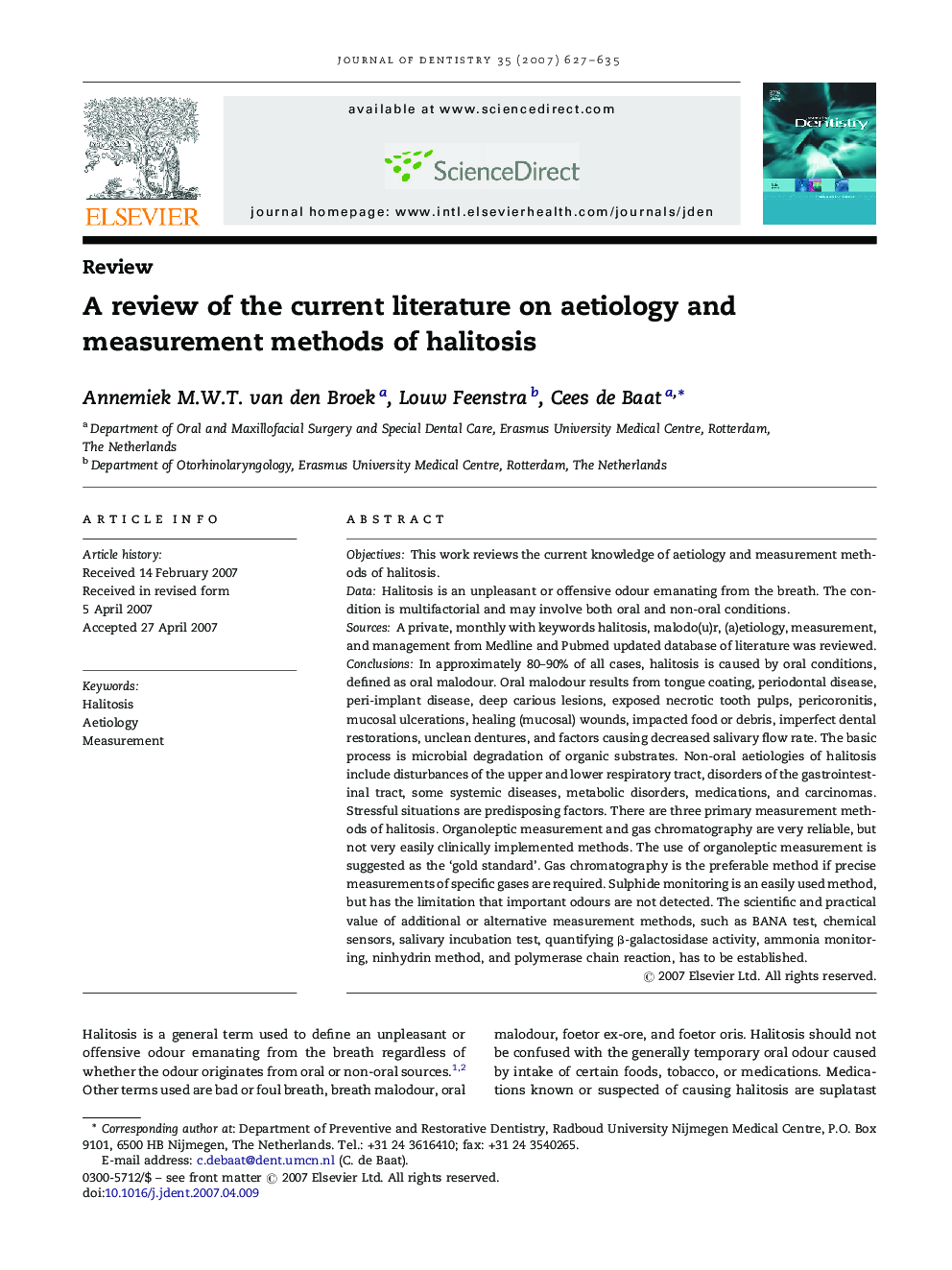| کد مقاله | کد نشریه | سال انتشار | مقاله انگلیسی | نسخه تمام متن |
|---|---|---|---|---|
| 3146143 | 1197152 | 2007 | 9 صفحه PDF | دانلود رایگان |

ObjectivesThis work reviews the current knowledge of aetiology and measurement methods of halitosis.DataHalitosis is an unpleasant or offensive odour emanating from the breath. The condition is multifactorial and may involve both oral and non-oral conditions.SourcesA private, monthly with keywords halitosis, malodo(u)r, (a)etiology, measurement, and management from Medline and Pubmed updated database of literature was reviewed.ConclusionsIn approximately 80–90% of all cases, halitosis is caused by oral conditions, defined as oral malodour. Oral malodour results from tongue coating, periodontal disease, peri-implant disease, deep carious lesions, exposed necrotic tooth pulps, pericoronitis, mucosal ulcerations, healing (mucosal) wounds, impacted food or debris, imperfect dental restorations, unclean dentures, and factors causing decreased salivary flow rate. The basic process is microbial degradation of organic substrates. Non-oral aetiologies of halitosis include disturbances of the upper and lower respiratory tract, disorders of the gastrointestinal tract, some systemic diseases, metabolic disorders, medications, and carcinomas. Stressful situations are predisposing factors. There are three primary measurement methods of halitosis. Organoleptic measurement and gas chromatography are very reliable, but not very easily clinically implemented methods. The use of organoleptic measurement is suggested as the ‘gold standard’. Gas chromatography is the preferable method if precise measurements of specific gases are required. Sulphide monitoring is an easily used method, but has the limitation that important odours are not detected. The scientific and practical value of additional or alternative measurement methods, such as BANA test, chemical sensors, salivary incubation test, quantifying β-galactosidase activity, ammonia monitoring, ninhydrin method, and polymerase chain reaction, has to be established.
Journal: Journal of Dentistry - Volume 35, Issue 8, August 2007, Pages 627–635